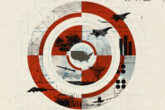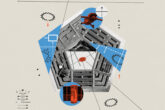September 10, 2024
How the Space Force Can Better Tell Its Story
This article was originally published in War on the Rocks.
In February, a tweet by Rep. Mike Turner created national news and panic around a possible new Russian on-orbit nuclear anti-satellite weapon. In the following weeks, senior Biden administration officials responded publicly to provide context, answer Americans’ burning questions, and soothe anxieties. The national security advisor spoke on National Public Radio confirming the assessment that Russians were developing this capability. Then-Assistant Secretary of Defense for Space Policy John Plumb testified publicly before Congress on the potential effects of such a weapon in space. Another senior official speaking at a public think tank event assuaged fears, explaining that this was “not an active capability that has already been deployed,” nor would it be used to “attack humans or cause structural damage on Earth.” But one voice — a voice in which the American public is very interested — remained silent. That was the voice of the U.S. Space Force, and this was a missed opportunity for them to reach everyday Americans.
Space Force leaders face a monumental challenge in establishing, manning, and resourcing a new service. This challenge requires explaining the service’s purpose and contribution to national security, basically telling its story. A strong narrative allows a service to attract the right people, with the right skills and motivation. It helps retain them and inspire them to excellence. It helps convince Congress to provide the financial resources and innovative authorities required for its core missions.
Space Force guardians should use the spotlight from real world events — like this story — to educate the public and advocate for resources.
The Space Force has a self-acknowledged public awareness problem and this year, for the first time, the service’s annual budget will dip. Space Force guardians should use the spotlight from real world events — like this story — to educate the public and advocate for resources. Instead, its leadership did not immediately step forward and even declined interviews on its development of counterspace capabilities.
We can’t know why guardians actually chose to stay silent. Senior civilian leaders may have told the military service to hold back, or the service may have self-censored. If the former is true, these civilian leaders have erred. The Space Force desperately needs that national platform, and its leadership has proven their ability to thread the needle in speaking on sensitive issues. Furthermore, it’s normal for service chiefs to address the public on the threat environment. For example, the Army Chief of Staff recently addressed the public through a think tank event about AUKUS. While AUKUS has become a politicized, highly publicized topic, Gen. Randy George used the platform to discuss the Army’s priorities and their value in the joint fight. However, if the Space Force self-censored, that indicates that the service is still suffering from risk averse tendencies inherited from the military space community of the past. The service should find a way to tell its story, which it can and must do within the confines of civilian leadership instruction. Civilian leaders need to pass the mic, and the service should readily and willingly take it.
Read the full article from War on the Rocks.
More from CNAS
-
Stuck in the Cul-de-Sac
For more than a decade, the United States has sought to modernize its military to deter China, but it has become stuck in a developmental cul-de-sac that has allowed China to ...
By Carlton Haelig & Philip Sheers
-
Build a High-Low Mix to Enhance America’s Warfighting Edge and Deter China
The Trump administration can take immediate actions to improve U.S. military capability, capacity, and warfighting to deter China and reverse negative trends in military power...
By Stacie Pettyjohn, Carlton Haelig, Becca Wasser & Josh Wallin
-
To Focus on China, U.S. Needs to Wean off Europe and Middle East Missions
If the United States cannot rebalance its military focus toward the Indo-Pacific it risks expediting Chinese aggression in the region and furthering the decline of the US-led ...
By Carlton Haelig
-
Integration for Innovation
Executive Summary In August 2023, Deputy Secretary of Defense Kathleen Hicks made a clear case that the Department of Defense (DoD) must do better in “creat[ing] and exploit[i...
By Michael Brown, Ellen Lord, Andrew Metrick & Robert O. Work




